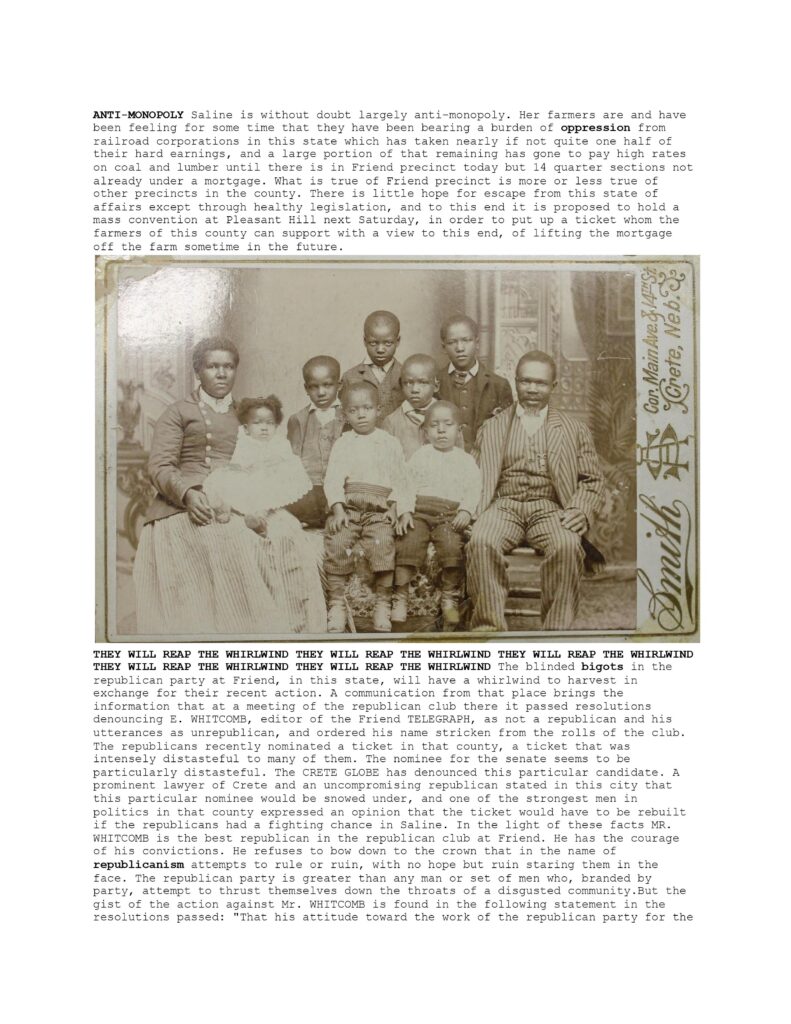Following this exercise- I decided to play with documents against archive that may have not inherently matched together. I leaned on Saidiya Hartman’s critical fabulation, Tina Campt’s listening to the images, and an article by Philip Norton entitled “Tony’s Oldies: Visualising Vincentian Diasporic Memory” to insert image against narration.
I started with the vernacular photography on this website for the county – http://negenweb.net/NESaline/ A community based and curated online database. Similar to Tony’s Oldies, the website serves the purpose to support “genealogy questions”- but what is curated are letters, pictures from ceremonies, gravesites, maps, and other odd digitized entries that the folks of Saline believe to define Saline for themselves.
The only nonwhite photo I could find on this archive was the photo and house of Henry Burden. Burden as per this particular narrative was to have escaped the confederacy, joined the union and made his way west to settle. He was the “first” Black person to settle the area according to this archive. Similarly to Norton’s observation, archives can reify colonial and in this case settler colonial histories and note the resistance to it. As I worked to triangulate Burden’s photo with other Black specific archives by the state of Nebraska- Burden’s home was part of the underground railroad, something not mentioned on the NE Saline county site.
I decided to read two items of this online archive within each other- bolding the words that stood out to me to see if it would help me ask additional questions about what it meant for this family to be a new and integral part of the landscape of Saline County.



